If your dog is underweight, it’s important to determine the underlying cause and take corrective action. Some of the most common causes of weight loss in dogs are parasites, diabetes, cancer, and other diseases.
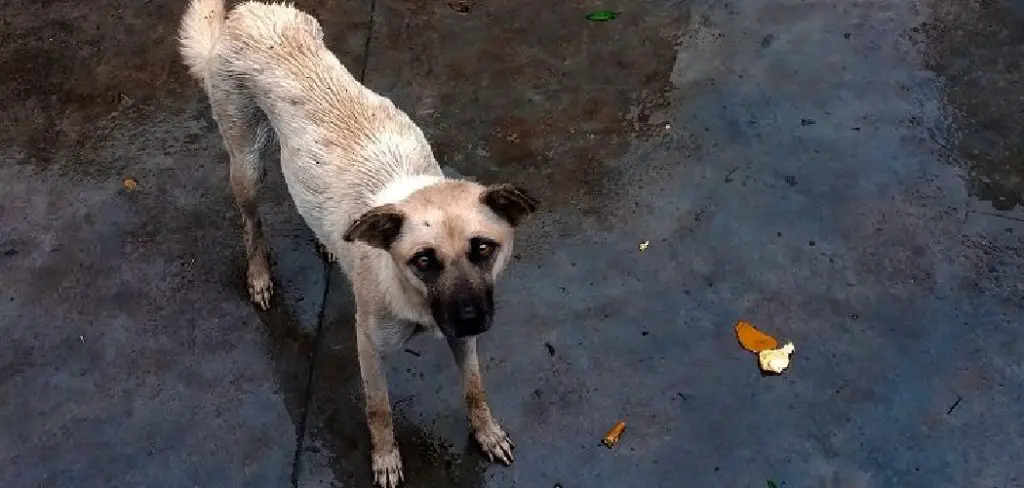
If you can’t identify a specific cause, there are still some things you can do to help your dog gain weight. In this article, we’ll discuss the common causes of weight loss in dogs and how to know if dog is underweight. We’ll also provide tips on how to help your dog gain weight safely and effectively.
Contents
7 Reasons That Causes Your Dog to Become Underweight:
1. Intestinal Parasites:
Intestinal parasites are a common cause of weight loss in dogs. These parasites can steal nutrients from your dog’s food, causing them to lose weight. They can also cause diarrhea, leading to dehydration and further weight loss. If your dog is infected with intestinal parasites, you may notice them losing weight, having diarrhea, or both.
2. Diabetes:
Diabetes is a condition that occurs when the body cannot properly process glucose, resulting in high blood sugar levels. Diabetes can cause weight loss by making the body lose sugar through urine. In addition, diabetes can also lead to increased appetite and thirst, which can cause weight loss. If your dog is diabetic, you may notice them drinking more water than usual and urinating more frequently. They may also have a sudden increase in appetite or lose interest in food altogether.
3. Cancer:
Cancer is a disease that can cause weight loss by damaging the body’s ability to absorb nutrients. Cancer can also lead to anorexia, which is a loss of appetite. If your dog has cancer, you may notice them losing weight, having a loss of appetite, or both.
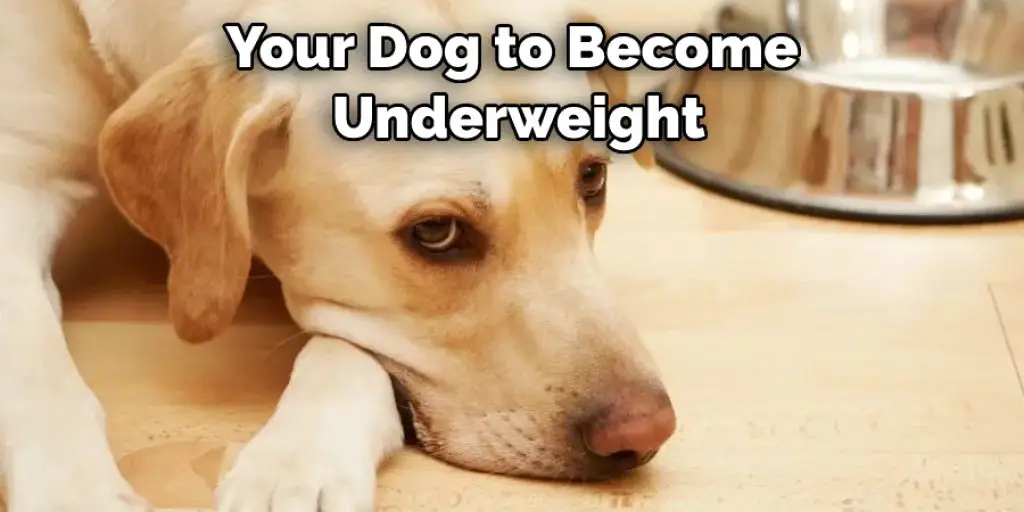
4. Not Eating Enough:
If your dog isn’t eating enough food, it will obviously lose weight. This can be due to several factors, such as a change in diet, illness, or stress. If your dog isn’t eating enough food, you may notice them losing weight, having a loss of appetite, or both.
5. Poor Quality Food:
If your dog is eating poor quality food, they may not be getting the nutrients they need to maintain a healthy weight. This can lead to weight loss. If you think your dog’s food may be of poor quality, talk to your veterinarian. They can help you select a better quality food for your dog. If the food is of poor quality, you may notice your dog losing weight, having a loss of appetite, or both.
6. Decrease in Activity Level:
If your dog isn’t getting enough exercise, it may start to lose weight. This is because exercise helps the body burn calories. If your dog isn’t getting enough exercise, you may notice them losing weight or having a decrease in activity level. If this happens, try to increase your dog’s activity level by taking them for walks, playing with them, or enrolling them in a dog agility class.
7. Excessive Stress:
Stress can cause weight loss in dogs by affecting their appetite. Stress can also lead to a decrease in activity level, which can also cause weight loss. If you think your dog is stressed, try to identify the source of the stress and remove it from their environment.
If you can’t remove the source of the stress, you can try to help your dog cope with it by providing them with a safe place to go, such as a crate or beds. You can also try to desensitize them to the stressor by slowly exposing them to it in a controlled environment.
If you think your dog is underweight, the first step is to talk to your veterinarian. They can help you determine if your dog is actually underweight and, if so, what the cause may be. They can also guide you on how to help your dog gain weight safely and effectively.
How to Know if Dog Is Underweight: 10 Ways to Find Out
1. Check Their Ribs:
One of the easiest ways to tell if a dog is underweight is by feeling its ribs. If you can feel your dog’s ribs easily, they are likely to be underweight. The Ribs should be soft to the touch and covered with a light layer of flesh. If you find that the ribs are protruding or easily visible, this is a sign that your dog needs to gain weight.
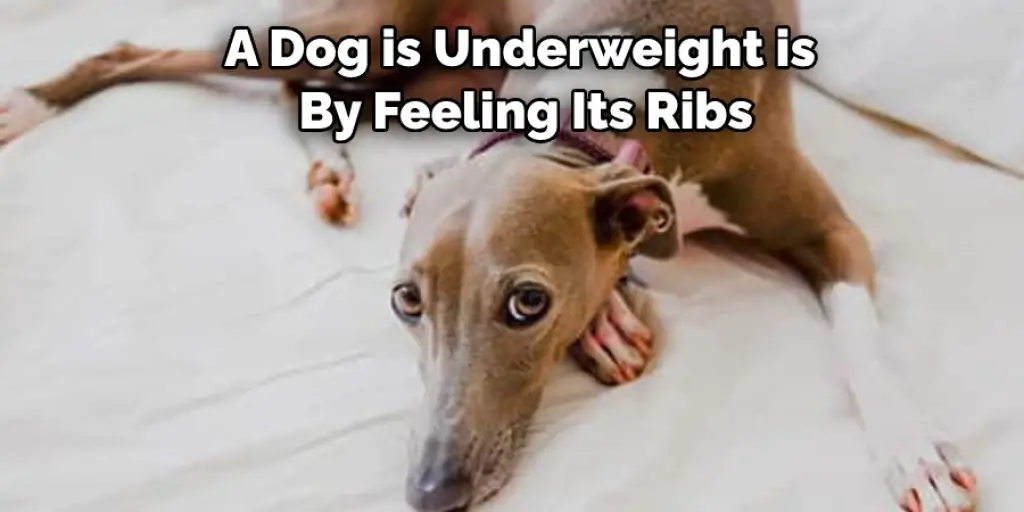
2. Look at Their Waist:
Another way to tell if your dog is underweight is by looking at its waist. A healthy dog should have a visible waist, meaning its stomach should be narrower than its hips. If you can’t see your dog’s waist, they are likely carrying too much weight. However, it can also happen that a dog is too skinny and doesn’t have a visible waist. Again, this could be a sign that the dog is underweight.
3. Check Their Body Condition Score:
You can also tell if your dog is underweight by checking their body condition score. This scoring system ranges from 1 to 9, with 1 being too skinny and 9 being obese. A body condition score of 5 is considered to be a healthy weight. If your dog has a body condition score of 4 or below, they are likely to underweight. If your dog has a body condition score of 6 or above, they are likely overweight.
4. Check the Base of Their Tail:
Another way to tell if your dog is underweight is by checking the base of its tail. A healthy dog should have a small layer of fat here, and you should be able to feel their vertebrae. If your dog doesn’t have any fat at the base of their tail, or if you can see their vertebrae easily, they may be underweight. It may also happen that a dog carrying extra weight in its stomach and thighs may appear thinner at the base of its tail.
5. Check Their Coat:
You can also check the condition of your dog’s coat as an indicator of their weight. Their coat will be dull and flaky if they carry too much weight. On the other hand, a healthy coat should be shiny and thick. Make sure that you are also regularly brushing your dog’s fur to help promote a healthy coat.
6. Check Their Shoulders and Spine:
If you feel the dog’s ribs and spine, you should be able to feel their individual bones. If the dog is overweight, a layer of fat will cover the bone, making it difficult to feel. When running your hands along their back, you should be able to feel each vertebra. You should also be able to feel their shoulder blades. Make sure to check both the front and back of their shoulders.
7. Examine Their Neck:
The neck is another area where you can easily feel the dog’s bones. If the dog is overweight, a layer of fat will cover the bone, making it difficult to feel. You should also be able to see the dog’s Adam’s apple. If you can’t see their Adam’s apple, the dog is likely carrying too much weight.
8. Check Their Stomach:
A dog who is overweight will often have a ‘saggy’ stomach. This is because the extra weight in their stomach pulls down on the skin, causing it to sag. A healthy dog will have a tight stomach that is not sagging. If your dog’s stomach is sagging, it’s a sign that they are carrying around too much weight.
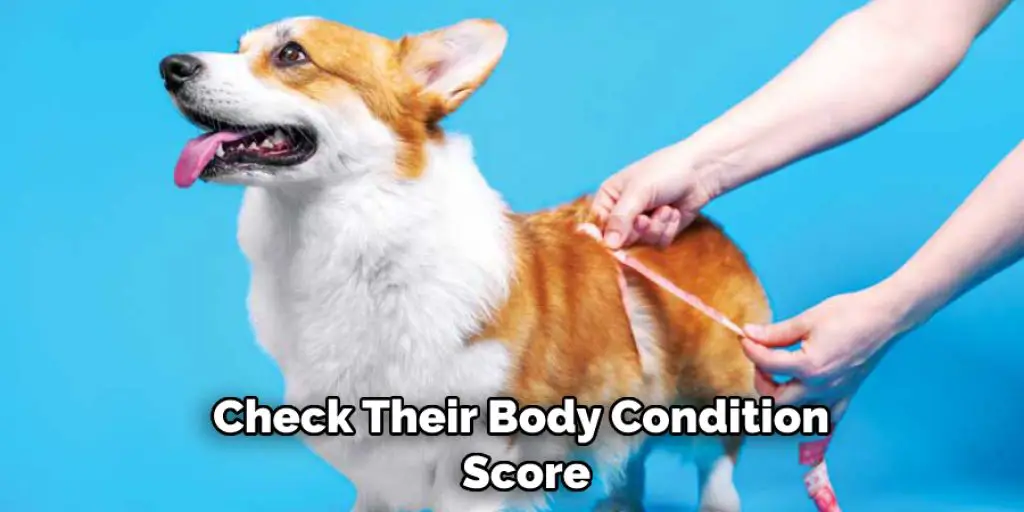
9. Take a Bird’s Eye View:
Another way to tell if your dog is underweight is by taking a bird’s eye view. This means looking down at your dog from above. A healthy weight dog will have a slight hourglass shape, meaning that their chest will be slightly narrower than its hips. If you can’t see this hourglass shape, your dog is likely carrying too much weight. If your dog’s ribs are visible, this is a sign that they are underweight.
10. Look at Their Overall Appearance:
When looking at your dog, you should be able to see a defined waist. If their stomach is larger than their hips, or if their waist is not visible, they are likely carrying around too much weight. Additionally, overweight dogs often have less energy and may move more slowly than their leaner counterparts.
Some Helpful Tips to Get Your Dog to Gain Weight
1. Feed Them More Frequently:
If your dog is underweight, one of the best things you can do is to feed them more frequently. This will help them to get the nutrients and calories they need to gain weight. For example, try feeding them 3-4 times per day instead of just once.
2. Add Some Fat to Their Diet:
Fat is an important source of energy for dogs, so adding a bit of fat to their diet can help them to gain weight. You can do this by feeding them higher-fat foods or adding olive oil or coconut oil to their food. If your dog is on a commercial diet, you can also ask your vet about switching to a higher fat formula.
3. Feed Them More Calories:
If your dog is underweight, it may need more calories to help them gain weight. You can do this by feeding them higher-calorie foods or by adding some canned food or cooked meat to their diet. You can also ask your vet about switching to a higher-calorie formula if your dog is on a commercial diet.
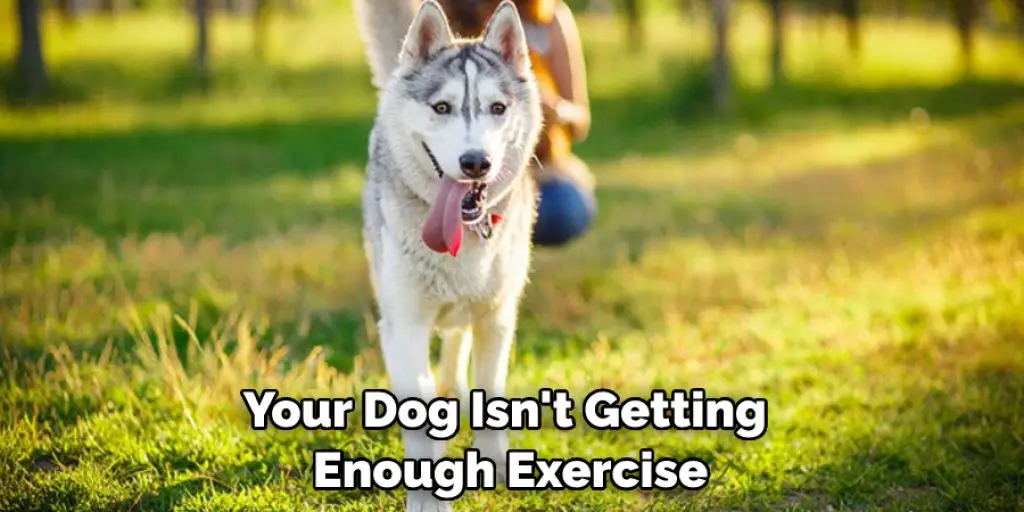
Final Words
Body condition scoring is one way to determine if a dog is underweight. Veterinarians use this system to score dogs based on their physical appearance. Six different points are scored, each with a corresponding weight range. For example, dogs that score 5 or 6 are considered underweight.
Another way to tell if a dog is underweight is by looking at its ribs. You should be able to see them quickly but not feel them prominently sticking out from the body. The dog may be overweight if you can’t see any ribs at all. We hope this guide helped give you advice on how to know if dog is underweight. If you are concerned that your dog may be underweight, consult with your veterinarian to get their professional opinion.


